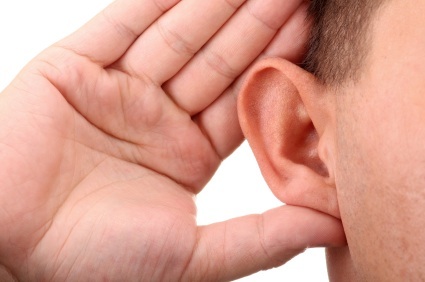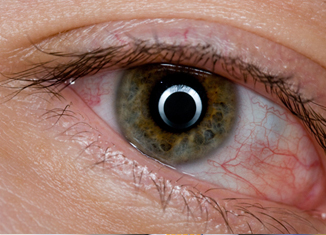Practice

Loud and clear: Eye and ear care services in pharmacy
In Practice
We know you want to continue to build on your practice, why not hear from others in the sector striving to do the same.Bookmark
Record learning outcomes
Eye and ear care have always been important OTC categories in community pharmacy. According to IRI data, the ear care market showed growth of 3.4 per cent to £21.3m in the year to November 2013, while the eye care market grew by 0.9 per cent to £57.7m in the same period. Besides providing eye and ear care products and advice, some pharmacies have recognised the benefits of offering hearing check and optician services in-store.

The power of pharmacy
A study by the University of Manchester’s audiology and deafness research group found that one in five middle-aged people who need a hearing aid do not wear one, while the Eyecare Trust says that one in 10 British adults have never had an eye examination.
Thanks to its community-wide reach, bringing sight and hearing care services into pharmacy can be a vital way of reaching people who may be having trouble in these areas but are unsure of how and where to go for treatment.
For example, Eye Pharmacy is a pharmacy and optician based in Mirfield and Dewsbury, which combines the two businesses, and offers full NHS and private optical and pharmacy services. Eye tests are carried out by an optometrist on site, who also uses digital retinal photography to take a detailed photograph of the back of the patient’s eye to give a reliable diagnosis of diabetes, high blood pressure and glaucoma, which the pharmacy is then ideally placed to help advise on treatment.
Founder and pharmacist Ruby Mughal says: “Eye Pharmacy operates in a truly integrated manner delivering both optical and pharmacy services as one, and it is this concept that makes Eye Pharmacy unique and the only one of its kind nationally. There is no separation between the services provided.â€
Another example is Fairmans Pharmacy, a group of six pharmacies in the north east of England, where customers can receive hearing care services from Gordon Gipson, honorary fellow of the British Society of Hearing Aid Audiologists (BSHAA) and owner of Northumbria Hearing.
Gipson was persuaded to join forces with the pharmacy when he realised how much the service could benefit the community. “When Chris and Julie Forster, the owners of Fairmans, first got in touch with me a couple of years ago I wasn’t that interested in getting involved, but after I met them it was clear that they weren’t wanting to offer hearing care to their customers just to make money, but rather to offer them a service, so I agreed. Their customers can ring me direct and arrange to come and see me, or I’ll go into Fairmans’ Monkseaton branch to see them. I also do domiciliary visits as well, because lots of people feel more comfortable talking about this in their own homes.â€
Chris Holmes, pharmacy manager of Fairmans’ Benton branch, says that being able to offer the service is “very valuable†and that “customer feedback has been so positiveâ€.
Sound advice
Even if hearing services aren’t available in-store, pharmacy teams should be alert to the signs of hearing loss and be able to signpost customers to hearing check services.
“A lot of people with hearing problems don’t want to admit to it, says Gipson,“but a giveaway is if they turn one ear towards you when you are talking to them, or extend their neck, or screw up their eyes in concentration. These are all signs that they may be having difficulty hearing you clearly, but you’ll have to be very tactful if you try to bring this up with them.â€
Jonathan Gardner, managing director of Boots Hearingcare, which plans to open 13 new hearingcare locations within Boots pharmacies across the UK by the end of 2014, also recommends that pharmacists and their staff be ready to advise customers on how to protect their hearing from noise damage.
“Hearing loss most commonly occurs through the everyday wear and tear of tiny hair cells in the ears over time,†he says, “so as we get older we are more likely to experience problems.
“Exposure to noise over 85 decibels also has the potential to affect hearing by damaging these cells. Therefore we would recommend pharmacists tell customers to wear earplugs if they regularly visit gigs or concerts, and use hearing protection if their work or hobbies mean that they are exposed to loud noise. Volume controls on MP3 players can also go as high as 100 decibels, so reducing the volume and time spent listening to music via headphones can help look after hearing.â€
All eyes...

Community pharmacy also has a valuable role to play in supporting customers to preserve the health of their eyes and prevent or delay the onset of sight loss. According to the Royal National Institute of Blind People (RNIB), over half of all sight loss cases in the UK are prevent-able, while regular sight checks (at least once every two years) are essential to spotting the early signs of sight loss and eye disease that can occur.
More than 30m people in this country are entitled to a free eye examination on the NHS, including anyone:
• Aged 60 years or over
• Under 16 years or under 19 years and still in full time education
• Diagnosed as having diabetes or glaucoma
• 40 years of age or over with a close relative with glaucoma
• Registered blind or partially sighted
• In need of complex lenses.
The RNIB advises pharmacists to refer patients presenting with blurred, distorted or unclear vision to an optometrist, and if the change is sudden, to the nearest A&E.
Besides regular sight checks, lifestyle measures such as following a healthy diet and protecting the eyes from UV damage (which can lead to cataracts and macular degeneration) can help to avoid many eye problems.
“Vitamins A, C and E, found in fresh fruit and vegetables, are associated with good eye health and can help protect against related eye conditions,†says Tony Whyatt, national business development manager at ophthalmology company Altacor. In addition, food or supplements containing the carotenoids lutein and zeaxanthin may help to protect against age-related macular degeneration (AMD).
Following these measures is particularly important for patients with diabetes, as complications of the condition include blurred vision, cataracts and most seriously, diabetic retinopathy, which occurs when the blood vessels that supply the retina become damaged.
In addition, certain aspects of modern life – such as staring at computers, wearing contact lenses and air conditioning – can disrupt eyes’ natural lubrication, leading to irritation and even infection and disease. To avoid problems, “general advice should include taking regular breaks from the computer monitor and reducing glare by adjusting brightness and contrastâ€, says Whyatt. “The monitor should also be positioned at least 20 inches away and directly at eye level.â€
 Conjunctivitis explained
Conjunctivitis explained
Conjunctivitis is one of the commonest eye problems pharmacists encounter, but understanding the cause is essential to providing the correct treatment and advice.
There are three different types of conjunctivitis:
• Irritant conjunctivitis occurs when an irritant gets into the eyes and makes them sore. Rubbing the eyes can make the condition worse, but the conjunctivitis should settle once the irritant is removed
• Infective conjunctivitis is caused by a virus, bacteria or an STI such as chlamydia or gonorrhoea. Symptoms include reddening and watering of the eyes and a sticky coating on the eyelashes. It is highly contagious, so sufferers should avoid sharing towels or close facial contact with others
• Allergic conjunctivitis causes itchy, swollen eyes and occurs when the eyes come into contact with an allergen. There are four main sub-types:
• Seasonal allergic conjunctivitis
• Perennial allergic conjunctivitis
• Contact dermatoconjunctivitis
• Giant papillary conjunctivitis.
Seasonal and perennial allergic conjunctivitis are usually triggered by common allergens, such as pollen, but can usually be managed effectively with antihistamines. Contact dermatoconjunctivitis and giant papillary conjunctivitis are usually caused by eye drops or contact lenses, so once the cause is identified and avoided the symptoms usually clear up. However it may be necessary to refer customers to an ophthalmologist for further treatment.
